Looking for the perfect read-aloud books to captivate your kindergartener's imagination? You've landed in exactly the right place. Reading aloud opens doors to language development, creativity, and lasting bonding moments. Your child's love for stories begins with the books you choose to share with them.
The right read-aloud book transforms quiet time into adventure time. This guide helps you discover engaging titles that kindergarteners typically adore across different developmental stages. You'll find practical tips for selecting books that match your child's interests and current abilities. Let's explore this wonderful world of kindergarten read-alouds together.
Key Takeaways
-
Reading aloud daily naturally builds vocabulary, comprehension, attention, and emotional understanding.
-
Selecting books that align with your child’s interests and developmental level enhances engagement and learning.
-
Stories rooted in culture, nature, and real-life experiences foster curiosity, empathy, and social skills.
-
Interactive, rhythmic, and imaginative books make learning fun while strengthening memory and prediction skills.
-
Consistent, guided reading experiences provide a foundation for long-term literacy and confident readers.
Why Are Read-Aloud Books Important for Kindergarteners?
Reading aloud is one of the most powerful ways you can shape your child’s learning. At this age, your kindergartener’s brain is wired to soak up words, rhythms, and ideas. A simple daily read-aloud helps them hear millions more words before school, building the foundation for reading success.
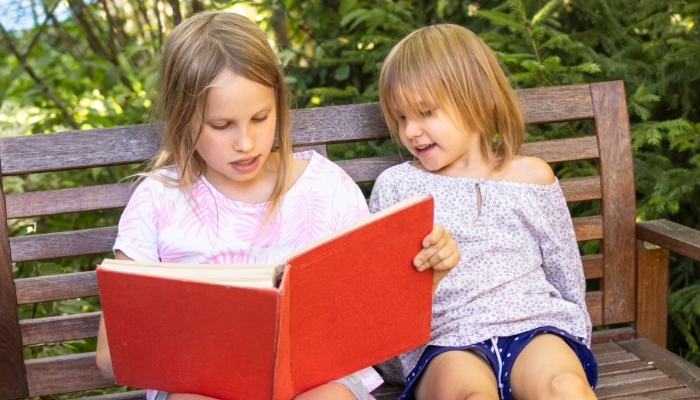
Here’s why read-aloud books matter:
-
Language Development and Vocabulary Growth
-
Exposes children to words they wouldn’t hear in everyday conversation.
-
Introduces complex sentence structures that support grammatical understanding.
-
Demonstrates formal speech patterns that benefit academic success.
-
-
Listening and Concentration Skills
-
Builds focused attention spans that support classroom learning.
-
Helps children follow narrative sequences and remember details.
-
Strengthens active listening for success across subjects.
-
-
Imagination and Creative Thinking
-
Combines pictures and words to spark visualization.
-
Introduces new worlds beyond children’s immediate experience.
-
Encourages abstract thinking and problem-solving.
-
-
Social and Emotional Learning
-
Helps children understand emotions and perspectives.
-
Provides safe spaces to explore feelings like fear or disappointment.
-
Teaches social skills and empathy through friendship stories.
-
Your kindergartener gains confidence through shared reading experiences that make learning feel joyful rather than overwhelming. However, many parents worry about choosing the wrong books, but the truth is that consistency matters more than perfection. The following section will guide you through excellent titles that typically work well for kindergarteners.
Also Read: How to Improve Your Child’s Reading Skills
Best Read Aloud Books for Kindergarten
Selecting quality read-aloud books creates memorable experiences that fuel your child's growing love for reading. Great kindergarten books combine engaging stories with age-appropriate themes that spark curiosity and meaningful conversation. Your choice of books directly impacts how much your child enjoys and benefits from story time.
Here are carefully curated categories of exceptional read-aloud books:
Classic and Popular Kindergarten Read-Alouds
These beloved titles have captivated young audiences for years with their memorable characters and engaging storylines that genuinely stand the test of time.
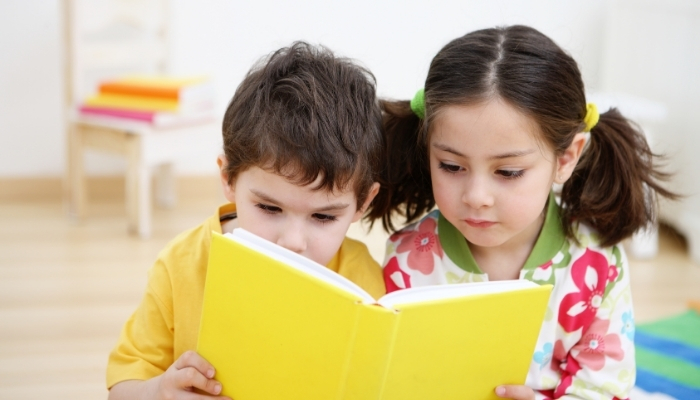
1. Possum Magic by Mem Fox
A beloved Australian classic featuring Grandma Poss and invisible Hush on their quest across Australia. The duo searches for special foods in different cities, hoping to find the perfect treat that will make Hush visible again.
Why it works for read aloud:
-
Rhythmic, repetitive text builds reading confidence gradually.
-
Interactive food guessing keeps children engaged throughout the entire story.
-
Perfect pacing.
2. Diary of a Wombat by Jackie French
A humorous look at life through a wombat's eyes, featuring his daily routine of sleeping, eating carrots, and creating chaos in the garden. The simple diary format captures perfectly timed comedic moments between a determined wombat and puzzled humans.
Why it works for read aloud:
-
Short, simple sentences suit kindergarten attention spans perfectly.
-
Gentle humor appeals to both children and adults reading together.
3. The Very Cranky Bear by Nick Bland
Four cheerful animal friends discover a grumpy bear living alone in a dark cave. Their attempts to brighten his day with creative gifts and friendship lead to surprising results and a heartwarming transformation.
Why it works for read aloud:
-
Clear moral message about kindness and cooperation.
-
Bright, supportive illustrations effectively enhance the comprehension of the story.
4. Edward the Emu by Sheena Knowles
An adventure following Edward, a zoo emu who grows tired of his ordinary life and decides to try being different animals instead. His amusing attempts at copying lions, seals, and snakes create delightful chaos until he discovers something special about being himself.
Why it works for read aloud:
-
Rhyming text creates a natural reading rhythm that children love.
-
Identity themes resonate with the common experiences of growing children.
-
Self-acceptance message.
5. Where is the Green Sheep? by Mem Fox
A delightful search story featuring sheep of every color and description, red sheep, blue sheep, wind sheep, wave sheep, but where could that elusive green sheep be hiding? The playful hunt continues through creative scenarios until the satisfying discovery.
Why it works for read aloud:
-
Predictable pattern builds reading confidence gradually and safely.
-
Interactive searching engages active participation from young listeners.
6. Who Sank the Boat? by Pamela Allen
Five animal friends eagerly climb aboard a rowboat for their adventure on the water. The cow, donkey, sheep, pig, and tiny mouse each take their turn boarding, but their combined weight creates unexpected consequences in this suspenseful tale.
Why it works for read aloud:
-
Science concepts are presented through an engaging story format naturally.
-
Suspenseful questioning maintains interest throughout the entire reading experience.
7. The Gruffalo by Julia Donaldson
In this book, Julia Donaldson introduces a clever little mouse who takes a walk through the deep, dark wood. You’ll follow him as he invents stories about a fearsome creature called the Gruffalo to scare away predators, and watch what happens when his imagination becomes real.
Why it works for read aloud:
-
A strong rhyme scheme naturally supports the development of memory and fluency.
-
Clever plot twists consistently surprise and delight young audiences.
These classic selections offer reliable entertainment while developing essential literacy skills through engaging storytelling that children consistently request again and again. Moving forward, let's explore stories that connect children to their heritage.
Australian Books and Indigenous Tales
Stories rooted in Australian culture help children understand their heritage. They also explore universal themes of belonging, respect, and connection to country that resonate across all backgrounds.

8. Welcome to Country by Aunty Joy Murphy & Lisa Kennedy
This gentle introduction explains the Aboriginal tradition of acknowledging traditional land ownership before gatherings begin. Beautiful illustrations show how Welcome to Country ceremonies honor Indigenous connections to land and create respectful spaces for learning together.
Why it works for read aloud:
-
Cultural education is presented respectfully and clearly for developing minds.
-
Promotes understanding of Indigenous perspectives and essential traditions.
9. The Echidna and the Shade Tree by Mona Green & Pamela Lofts
An echidna loses its spikes and searches for a new home in this traditional Aboriginal story. The tale explains natural phenomena while teaching lessons about adaptation, resilience, and finding strength in unexpected places during difficult times.
Why it works for read aloud:
-
Traditional storytelling style naturally and effectively captivates young audiences.
-
Natural history is woven skillfully into an engaging narrative structure.
10. Somebody's Land: Welcome to Our Country by Adam Goodes & Ellie Laing
Two children explore their neighborhood and learn about the Aboriginal people who first lived there. This contemporary story bridges the past and present, promoting cultural awareness and understanding of shared spaces and histories.
Why it works for read aloud:
-
A modern perspective on traditional land acknowledgment practices and their meanings.
-
Child-friendly approach to complex historical topics and concepts.
11. Little Bird's Day by Sally Morgan & Johnny Warrkatja Malibirr
A small bird experiences a full day in the Australian bush through the eyes and perspectives of Indigenous people. Bilingual text in English and Yolŋu Matha introduces children to Aboriginal language and worldview while celebrating meaningful linguistic diversity.
Why it works for read aloud:
-
Dual language exposure significantly and naturally broadens linguistic awareness.
-
Indigenous perspective on nature and daily life experiences.
12. Big Rain Coming by Katrina Germein
A young Aboriginal boy recognizes the natural signs that big rain is approaching the land. This story celebrates Indigenous knowledge of weather patterns and a deep connection to country that has been carefully passed down through generations.
Why it works for read aloud:
-
Environmental awareness through traditional knowledge systems and understanding.
-
Building anticipation creates excitement throughout the reading experience.
13. Bush Tracks by Ros Moriarty
Aboriginal children show readers the tracks animals leave in the bush landscape around them. Readers learn to read the natural signs that tell detailed stories about wildlife movement, behavior, and survival in the Australian environment.
Why it works for read aloud:
-
The interactive tracking game effectively and meaningfully engages young detectives.
-
Nature education through an Indigenous perspective and accumulated knowledge.
14. Kookoo Kookaburra by Gregg Dreise
In this story, Kookoo the kookaburra refuses to share his beautiful voice with the other birds. Along the way, you’ll discover how he learns the joy of giving and sharing his talents with everyone.
Why it works for read aloud:
-
Moral lesson delivered through engaging animal characters and situations.
-
Traditional storytelling structures naturally build comprehension skills over time.
-
Revolves around a sharing theme.
The above-mentioned Australian stories will connect your child to their cultural heritage while promoting understanding and respect for Indigenous perspectives.
Also Read: Kindergarten Reading Level Guide and Tips
Now, let’s look at the next category, which introduces young minds to scientific concepts through stories that make learning feel like exciting adventures.
Read Aloud Books That Explore Nature and Science
Science concepts become accessible and genuinely exciting when presented through engaging picture book stories that spark natural curiosity about the world and encourage hands-on exploration.
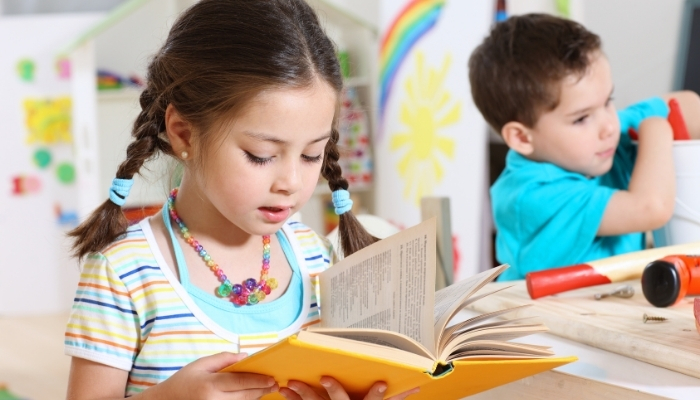
15. All Through the Year by Jane Godwin & Anna Walker
Two children experience the changing seasons through outdoor adventures and cherished family traditions. Each season brings discoveries and meaningful activities that celebrate nature's cycles while building understanding of time and natural change.
Why it works for read aloud:
-
Seasonal awareness fosters an understanding of time and the predictable natural changes that occur throughout the year.
-
Family traditions create emotional connections to learning and memory.
16. A Year on Our Farm by Penny Matthews
Farm life unfolds through twelve months of seasonal activities and careful animal care responsibilities. Children learn about food production and rural life as they follow farming families through their daily routines and seasonal challenges.
Why it works for read aloud:
-
Clear, rhythmic text makes it easy for you to read aloud naturally.
-
Realistic farm activities spark curiosity and questions from listeners.
-
Repetition of seasonal patterns helps reinforce time concepts and sequencing.
17. Looking for Crabs by Bruce Whatley
A family searches rocky tide pools for crabs during their exciting beach holiday adventure together. This story combines family fun with marine biology education about tidal pool ecosystems and the fascinating creatures that inhabit them.
Why it works for read aloud:
-
Playful language makes the marine biology concepts easy to read and engaging to read aloud.
-
A family adventure invites discussion, fosters personal connections, and sparks shared excitement.
-
Repetitive and descriptive text encourages participation and prediction.
-
Vivid illustrations support listening comprehension and spark imagination.
18. Sam's Bush Journey by Sally Morgan
Sam explores the Australian bush and discovers native plants and animals in their natural habitats. Indigenous knowledge guides his learning about traditional uses for native species and the important interconnections between all living things.
Why it works for read aloud:
-
The story format introduces native flora and fauna in an engaging and easy-to-read way.
-
Adventure and discovery encourage prediction, questions, and interaction during reading.
-
Descriptive language and rhythm support listening comprehension and imagination.
19. Backyard by Ananda Braxton-Smith
A curious child discovers the hidden world existing right in their own familiar backyard space. Tiny creatures and plants reveal themselves through careful observation and patient watching, transforming the ordinary into something genuinely magical.
Why it works for read aloud:
-
Descriptive text highlights small details, supporting imagination and close observation.
-
Rhythm and repetition make it easy to read aloud and predict what comes next.
-
Encourages questions and interaction, turning reading into a shared discovery experience.
Fun Rhymes, Counting, and Animal Adventures
Mathematical concepts and language combine in these entertaining books, making learning numbers and words feel like delightful games that children genuinely want to play repeatedly.
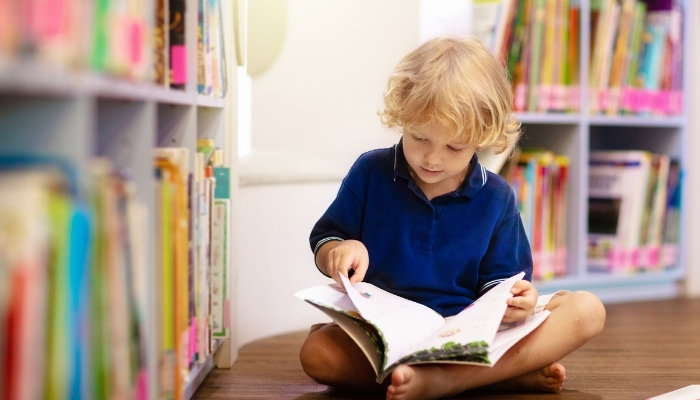
20. Wombat Walkabout by Carol Diggory Shields
Six little wombats explore the Australian outback in this engaging counting adventure story. Each wombat encounters different experiences while readers practice number recognition and sequencing skills in a natural, story-driven context that feels effortless.
Why it works for read aloud:
-
Counting practice is embedded seamlessly in a genuinely engaging story structure.
-
Australian animals create a meaningful local connection for young readers.
21. Counting Aussie Animals in My Backyard by Bronwyn Houston
In this book, native Australian animals appear in increasing numbers throughout colorful backyard scenes. Children follow along as they discover local wildlife while learning to count and recognize numbers.
Why it works for read aloud:
-
The playful counting sequence invites children to join in and anticipate what comes next.
-
Familiar local animals create personal relevance and connection.
-
Clear, rhythmic phrasing supports number recognition and active participation.
22. Possum Goes to School by Melanie Carter
A curious possum sneaks into school, exploring classrooms and activities with genuine childlike wonder. His funny adventures introduce school routines while keeping humor and warmth front and center.
Why it works for read aloud:
-
Lighthearted school adventures help reduce anxiety and make school feel welcoming.
-
Gentle humor keeps children engaged and encourages laughter and interaction.
-
Predictable sequences support comprehension and recall of school routines.
23. Over in the Meadow (Australian animal edition)
This classic counting song features Australian animals in their natural habitats and typical behaviors. Each verse introduces new creatures while building number awareness and natural rhythm that supports memory and learning retention.
Why it works for read aloud:
-
Musical rhythm makes it easy to read aloud, supporting memory and fluency.
-
Repetition encourages children to join in, thereby enhancing their engagement.
-
Local animal adaptation gives the story cultural relevance and connection.
24. Ten Little Fingers and Ten Little Toes by Mem Fox
Babies from around the world share the common human features of fingers and toes. This celebration of human similarity promotes inclusion while practicing counting skills and building awareness of diversity and meaningful connections.
Why it works for read aloud:
-
Repetitive, rhythmic text encourages participation and counting.
-
Celebrates inclusion and diversity, promoting meaningful discussion.
-
Simple, clear language supports attention and comprehension.
25. Koala Lou by Mem Fox
Koala Lou worries that her mother doesn't love her anymore as their family grows larger with the addition of new siblings. This touching story addresses common concerns about sibling rivalry while affirming the unconditional love that remains constant through all family changes.
Why it works for read aloud:
-
Emotional themes connect to common family experiences, fostering empathy.
-
A reassuring message builds confidence and a sense of security.
-
Dialogue and expressive text encourage expressive reading and participation.
26. There Was an Old Lady Who Swallowed a Mozzie by P. Crumble
The classic cumulative tale gets an Australian twist with familiar local animals and insects. This silly version maintains the original's appeal while introducing Australian wildlife in an entertaining and memorable format that children love to repeat.
Why it works for read aloud:
-
Cumulative structure naturally supports the development of memory and prediction skills.
-
Australian animals create cultural relevance and a meaningful local connection.
These entertaining books demonstrate that learning mathematical concepts can be both educational and thoroughly enjoyable when presented through genuinely engaging stories.
Also Read: Understanding Text and Reading Strategies
Now let's examine books that help children understand emotions, relationships, and social skills.
Read Aloud Books to Celebrate Family, Friendship, and Feelings
Emotional intelligence develops through stories that help children understand complex feelings, navigate relationships, and build empathy for others in their daily lives and interactions.
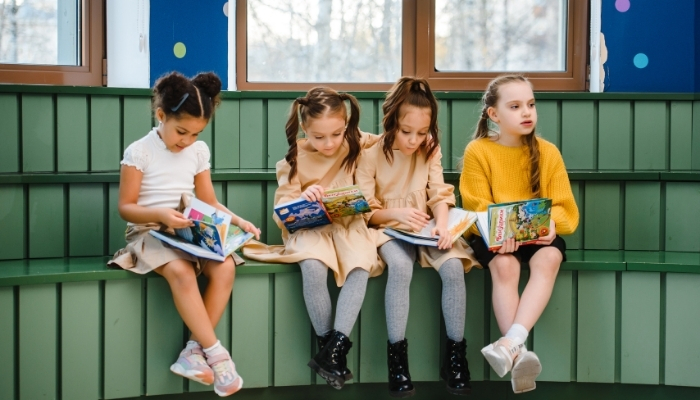
27. Family Forest by Kim Kane
Imagine walking through a forest where every tree reminds you of someone in your family. In this story, a child explores how each family member supports and connects with the others, showing how love and care grow like branches reaching out.
Why it works for read aloud:
-
Metaphor makes family relationships tangible and easy to discuss.
-
Vivid imagery sparks imagination and encourages observation.
-
Prompts reflection on relationships, making the reading interactive.
28. Grandpa and Thomas by Pamela Allen
Join Grandpa and Thomas as they spend a day together, sharing small adventures and quiet conversations. You’ll see how their special bond grows naturally, filled with warmth, laughter, and gentle life lessons.
Why it works for read aloud:
-
Warm, relatable moments invite empathy and connection.
-
Simple, everyday actions encourage participation and discussion.
-
Dialogue and pacing support expressive reading aloud.
29. My Two Blankets by Irena Kobald & Freya Blackwood
Follow a young girl as she brings her old blanket to a new country, slowly discovering new experiences along the way. You’ll see how she navigates fear, curiosity, and courage, learning to find comfort in both the old and the new.
Why it works for read aloud:
-
The story invites empathy and discussion about change and belonging.
-
Relatable emotions resonate with children’s personal experiences.
-
Gentle pacing allows for pauses to accommodate questions, reflections, and engagement.
30. Mum for Sale by Zanni Louise
A frustrated child decides to sell their mother but discovers that finding a suitable replacement isn't as simple as expected. This humorous story explores parent-child relationships while acknowledging that family bonds run deeper than temporary frustrations.
Why it works for read aloud:
-
Humor keeps children engaged and encourages expressive reading.
-
Relatable parent-child tension sparks discussion.
-
Dialogue and repetition make it fun to read aloud and anticipate.
31. The Great Expedition by Peter Carnavas
A quiet child joins a group adventure and discovers personal courage along the way. This gentle story illustrates how friendships naturally develop and how every child has unique strengths to contribute meaningfully to group experiences.
Why it works for read aloud:
-
Encourages confident reading of stories with adventure and discovery.
-
Highlights teamwork and personal strengths, prompting discussion.
-
Rhythm and repetition make it easy to read and anticipate.
32. How to Make a Friend in 6 Easy Steps by Dhana Fox
Follow a child as they try out step-by-step friendship tips, sometimes succeeding and sometimes failing. You’ll laugh along and discover that making friends is a journey filled with learning and fun.
Why it works for read aloud:
-
Funny, relatable scenarios keep listeners engaged.
-
Step-by-step structure encourages participation and predictions.
-
Gentle humor and dialogue invite children to act out or repeat parts.
Relationship-focused books will help your child navigate complex emotions while building the social skills they genuinely need. Our final category introduces books that encourage children to explore their world with curiosity, creativity, and confidence.
Read Aloud Books to Encourage Exploration and Curiosity
Curiosity-driven stories inspire children to ask questions, seek answers, and approach their world with wonder and confidence in their ability to discover genuinely new things.
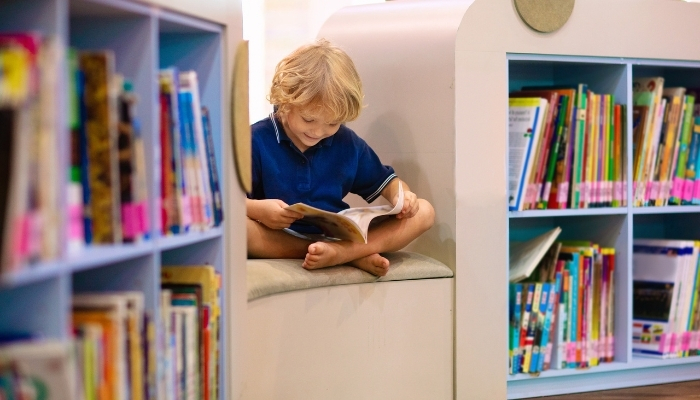
33. How to Catch a Star by Oliver Jeffers
Follow a determined boy as he comes up with imaginative plans to catch a beautiful star. You’ll enjoy his clever attempts and see how creativity and persistence can turn big dreams into exciting adventures.
Why it works for read aloud:
-
Engaging character actions model creative problem-solving aloud.
-
Repetition and imaginative scenarios invite children to predict and participate.
-
Encourages discussion about persistence and goal-setting.
34. The Treasure Box by Margaret Wild
A family flees their war-torn home carrying only a precious treasure box with them. This powerful story shows how memories, stories, and cultural heritage are passed down through families, showcasing resilience in the face of truly challenging circumstances.
Why it works for read aloud:
-
Universal themes of family resilience and love connect with children’s experiences.
-
Story prompts discussion about cultural heritage and treasured memories.
-
A rich narrative allows for expressive reading and emotional engagement.
35. The Tiny Explorers by Kat Macleod
Small creatures go on big adventures in their miniature world. Children follow them as they discover wonders in everyday spaces, learning that curiosity and exploration can make any world exciting.
Why it works for read aloud:
-
Accessible small-scale adventures keep young listeners engaged.
-
Encourages outdoor observation and interactive discussions for exploration.
-
Repetitive action and descriptive language support participation.
36. The Hidden Forest by Jeannie Baker
Environmental collage art reveals the hidden world existing within complex forest ecosystems. This wordless book encourages visual storytelling while building awareness of environmental interconnections and the importance of conservation efforts.
Why it works for read aloud:
-
Wordless format invites storytelling and interpretation aloud.
-
Detailed visuals develop observation skills and discussion prompts.
-
Builds environmental awareness through interactive engagement.
37. Imagine by Alison Lester
Children from different backgrounds share their dreams and imaginations about future possibilities and adventures. This celebration of diversity demonstrates that children everywhere share similar hopes while honoring the unique perspectives each child naturally brings.
Why it works for read aloud:
-
Diverse representation highlights universal childhood experiences.
-
Encourages discussion about dreams, goals, and imagination.
-
Simple, vivid text allows for expressive reading and participation.
38. The Magic Beach by Alison Lester
A family discovers a magical beach where anything becomes possible through imagination and creativity. This story celebrates the transformative power of creative thinking, showcasing how ordinary places can become extraordinary through a different perspective.
Why it works for read aloud:
-
An imaginative narrative encourages creative thinking and exploration.
-
Engaging settings resonate with children’s personal experiences.
-
Rhythm and descriptive text support interactive reading.
39. Ernie Dances to the Didgeridoo by Alison Lester
Ernie discovers his love for dancing when he hears traditional didgeridoo music. This story celebrates artistic expression and cultural appreciation while showing children that creativity takes many different forms and expressions.
Why it works for read aloud:
-
Artistic expression themes encourage creative exploration and building confidence.
-
A cultural music introduction broadens artistic awareness and genuine appreciation.
Exploration-themed books inspire children to approach their world with curiosity, creativity, and confidence in their ability to discover amazing things through investigation and imagination.
Having explored various book categories, you now need practical guidance for selecting the perfect titles that match your child's current interests and developmental needs.
Tips for Choosing the Best Read-Aloud Books for Kindergarten
Your kindergartner benefits most from books that naturally balance entertainment with gentle learning opportunities. Children retain information better when they're emotionally engaged with story content, making your book selection genuinely crucial for educational success.

Many parents worry about making the wrong choices, but remember that your child's preferences will guide you effectively over time.
Consider these essential factors when choosing read-aloud books:
Match Your Child's Current Interest Level
-
Observe what topics naturally capture your child's attention during play and conversation.
-
Choose books featuring characters or situations your child relates to personally right now.
-
Rotate between different genres to gradually expose your child to a variety of content.
-
Ask your child for input about book preferences and favorite characters regularly.
Consider Attention Span and Story Length Realistically
-
Start with shorter books and increase progressively in length as focus naturally improves.
-
Choose stories with engaging pictures that genuinely support text comprehension.
-
Look for books with natural stopping points to avoid attention waning during reading sessions.
-
Keep backup shorter books available for days when concentration feels particularly challenging.
Evaluate Language Complexity Appropriately
-
Select books with vocabulary slightly above your child's current speaking level.
-
Choose stories with repetitive phrases that build reading confidence gradually and safely.
-
Look for books that introduce new words within familiar story contexts naturally.
-
Balance familiar language with gentle challenges that promote healthy vocabulary growth.
Assess Visual Appeal and Illustration Quality
-
Choose books with clear, engaging illustrations that genuinely support story understanding.
-
Look for pictures that add meaningful information rather than simply decorating text.
-
Consider your child's visual preferences for realistic versus stylized artwork styles.
Check for Educational Value Without Sacrificing Entertainment
-
Select stories that naturally introduce learning concepts through genuinely engaging plots.
-
Select books that promote positive values, such as kindness, empathy, and perseverance.
-
Look for titles that encourage questions and meaningful conversation after reading.
-
Balance educational content with pure entertainment to maintain reading joy.
Remember that your enthusiasm for the stories directly impacts your child's engagement and enjoyment. Children sense authentic excitement and respond positively when you genuinely love the books you're sharing.
Conclusion
Read-aloud books open magical doors between your child’s current abilities and their limitless potential. Shared reading builds vocabulary, comprehension, emotional intelligence, and family connections that truly last.
Many parents worry their kindergartener isn’t keeping up with early literacy skills or feels anxious about reading. Daily read-aloud sessions help, but sometimes kids need extra guidance to build confidence, attention, and foundational skills that support long-term success.
FunFox Readers Club is designed for exactly that. We provide:
-
Small group classes led by experienced teachers using proven literacy methods.
-
Interactive sessions that turn reading into a fun, confidence-building experience.
-
Curriculum aligned with educational standards while keeping learning engaging.
-
Personalized feedback to help your child progress at their own pace.
-
Connections with other families who value literacy development.
Stop worrying and start helping your child thrive. Join FunFox Readers Club today and watch them gain confidence, build essential reading skills, and fall in love with learning in a supportive, expert-guided environment.
FAQ’s
1. How to do a kindergarten read-aloud?
Choose engaging books with clear text and illustrations. Read slowly and expressively. Pause for questions, encourage predictions, and connect story events to your child’s experiences to maintain attention and comprehension.
2. What is the 3-finger rule for reading?
While reading, hold up a finger for every word your child cannot read independently. If they struggle with three or more words, the book may be too challenging and needs to be adjusted.
3. What books are good for 5-year-olds?
Select books with simple narratives, repetitive phrasing, and relatable characters. Include picture books, counting or rhyming stories, and culturally diverse tales that promote curiosity, imagination, and foundational literacy skills.
4. How long should a read-aloud be for kindergarten?
Kindergarten read-alouds should typically last 10 to 20 minutes. Adjust based on your child’s focus, incorporating discussion, repetition, and interactive questions to sustain interest and understanding.















